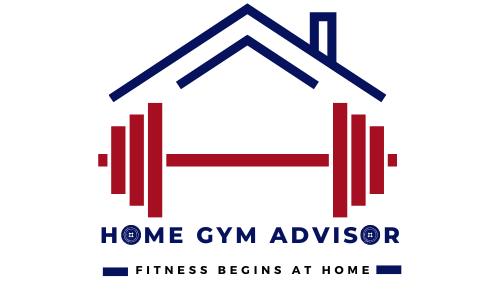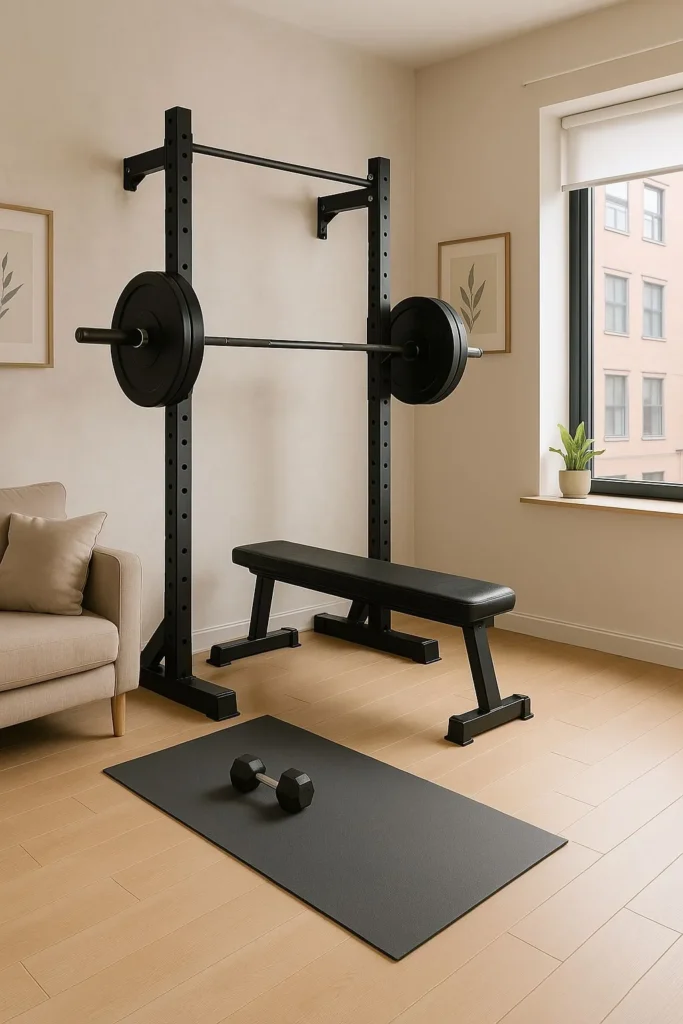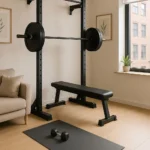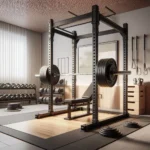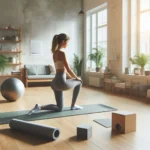Introduction: Space-Efficient Strength Training
Let’s face it—serious strength training in a small apartment seems like trying to fit a square peg in a round hole. Three months ago, I found myself staring at my 650-square-foot apartment, wondering if I’d have to choose between my fitness goals and having a livable space. With commercial gym prices soaring and my schedule getting increasingly unpredictable, I needed a solution that wouldn’t require me to repurpose my living room into a permanent gym.
The struggle is real for urban dwellers and apartment fitness enthusiasts. We want the convenience of home workouts but lack the luxury of dedicated fitness space. After weeks of research and measuring every inch of my apartment, I took the plunge on what seemed like the only viable solution: a folding power rack.
What followed was a 30-day experiment that completely transformed my approach to home fitness. In this post, I’ll share the unfiltered reality of installing, using, and living with a folding power rack in a space barely big enough for a sectional sofa—and why it might be the game-changer you’ve been looking for.
What is a Folding Power Rack and Why I Chose It
A folding power rack is exactly what it sounds like—a strength training station that can fold flat against the wall when not in use. Unlike traditional power racks that permanently occupy 4-16 square feet of floor space, these wall-mounted systems can be deployed for workouts and tucked away afterward, freeing up valuable living space.
Most folding power racks consist of a steel frame with adjustable J-hooks for barbell positioning, safety arms for protection during heavy lifts, and various attachment points for accessories. The magic happens at the hinges, which allow the rack’s uprights to swing inward toward the wall, reducing the footprint to just a few inches when folded.
What sold me was the combination of functionality and space efficiency. My chosen model (the PRx Profile Rack) extends only 24 inches from the wall when folded—less space than my coffee table takes up. When deployed, it provides a full 42-inch depth for squats, bench press, and other compound movements, with a weight capacity of 1,000 pounds—more than sufficient for my current strength level.
The cost comparison made the decision even clearer:
- Commercial gym membership: $65/month ($780/year)
- Traditional power rack setup: $800-1,200 (plus permanent space commitment)
- Folding power rack solution: $899 (one-time investment with minimal space requirement)
With the break-even point at just over a year compared to gym membership fees, the financial argument was compelling. But the real question remained: could this actually work in my apartment?
My Apartment Setup: Making It Work in Limited Space
Before clicking “purchase,” I conducted a thorough space assessment. I identified a 7-foot section of wall in my living area that met three critical requirements:
- Wall backed by studs (essential for mounting)
- Clear space in front when deployed
- Minimal visual impact when folded
The installation process was straightforward but required precision. After locating and marking the wall studs, I enlisted a friend’s help to mount the rack. We spent about two hours securing the wall brackets, ensuring they were perfectly level and securely anchored into the studs. The manufacturer provided clear instructions and all necessary hardware, though I did upgrade to heavy-duty lag bolts for extra peace of mind.
For floor protection (and to maintain my security deposit), I invested in 3/4-inch rubber gym flooring that I could roll out during workouts and store behind my couch afterward. This setup provided sufficient impact absorption for deadlifts while protecting my hardwood floors from damage.
The visual transformation surprised me. When folded, the rack protruded just 4 inches from the wall—less noticeable than some of my wall art. When deployed, it created a legitimate workout station that still left enough room to move around comfortably. My 12.5′ x 13′ living area remained functional even with the rack extended.
For weight storage, I repurposed a narrow IKEA bookshelf, replacing books with weight plates organized by size. Resistance bands hung on hooks behind the door, and my adjustable dumbbells tucked neatly under the couch. The entire setup consumed less than 10 square feet of storage space when not in use.
30-Day Training Experience and Results
I designed a 4-day training split focused on the core compound movements the folding power rack was built for:
- Day 1: Squats and lower body
- Day 2: Bench press and upper body push
- Day 3: Deadlifts and posterior chain
- Day 4: Overhead press and upper body pull
The rack performed exceptionally well for barbell squats, bench press (with a separate foldable bench), overhead press, and rack pulls. For deadlifts, I had to position myself carefully to avoid hitting the wall during the eccentric phase, but this minor adjustment quickly became second nature.
Movements requiring more lateral space—like barbell lunges or wide-grip pull-ups—proved challenging. I adapted by substituting split squats for lunges and purchasing a separate doorway pull-up bar for back training.
The daily routine of deploying the rack took about 90 seconds: unfolding the rack, rolling out the floor mat, and positioning my bench. Folding everything away post-workout took roughly the same time. This minimal setup/breakdown effort eliminated a major potential barrier to consistency.
Noise management required some finesse in my third-floor apartment. I implemented three effective solutions:
- Rubber mat flooring to absorb impact
- Silicone-lined weight collars to prevent plate rattling
- Controlled eccentric movements (no dropping weights)
These measures kept noise to a minimum—in fact, my downstairs neighbor had no idea I was lifting until she saw me carrying weight plates up the stairs and asked what I was doing.
The results after 30 days were remarkable. Without the friction of commuting to a gym, my consistency improved dramatically—I didn’t miss a single scheduled workout. My squat increased by 25 pounds, bench by 15 pounds, and deadlift by 30 pounds—progress I attribute largely to the convenience factor removing all excuses.
Challenges and Solutions
While the folding power rack proved an excellent solution, it wasn’t without challenges. Here’s how I addressed the most significant issues:
Wall Integrity: Before mounting, I consulted with a contractor friend who helped assess my wall structure. We identified the studs using both a stud finder and the tap method (solid studs produce a distinct sound when knocked). The contractor confirmed my walls could handle the load, but for those less certain, a professional assessment costs around $100-150—a worthwhile investment to prevent catastrophic failure.
Exercise Limitations: The constrained space required creativity. I couldn’t do walking lunges or certain dynamic movements, but substituting similar exercises (split squats instead of lunges, landmine presses instead of certain barbell movements) maintained training effectiveness without compromising results.
Roommate Considerations: I live alone, but had friends visit during this experiment. The rack’s ability to fold away meant I could temporarily reclaim the space for social gatherings. For those with roommates, establishing a schedule for rack deployment and communicating clearly about shared space usage is essential.
Landlord Approval: I reviewed my lease agreement thoroughly before installation. While permanent alterations typically require landlord approval, I documented the installation process and maintained the capacity to restore the wall to its original condition upon moving out by patching and painting the mounting holes—a small project compared to the benefits gained.
Cost-Benefit Analysis
Let’s break down the complete investment:
- Folding power rack: $899
- Barbell and weight plates: $485 (purchased used)
- Foldable bench: $169
- Rubber floor mat: $87
- Miscellaneous accessories: $110
- Total investment: $1,750
Compared to a mid-tier gym membership at $65/month plus the average $12 transportation cost per visit (8 visits monthly), the break-even point occurs at 16 months. However, this calculation doesn’t account for the time saved—approximately 40 minutes per workout in commuting time alone. Valuing my time at a conservative $20/hour, the rack pays for itself in just 7 months.
Space utilization proved even more impressive. A traditional power rack would permanently occupy about 16 square feet. At average rental prices in my city ($3.50/sq ft/month), that’s $56 worth of real estate monthly. My folding solution reclaims this space when not in use—essentially paying $672 in “virtual rent” annually.
Perhaps most importantly, the convenience factor resulted in perfect workout adherence over the 30 days—something I hadn’t achieved in years of commercial gym memberships. The value of consistent progress is difficult to quantify but impossible to ignore.
Folding Power Rack Buyer’s Guide
After a month of daily use, here are the critical features to consider when shopping for your own apartment-friendly folding power rack:
Wall-Mount vs. Free-Standing Models: Wall-mounted racks offer the slimmest profile when folded (3-6 inches from wall) but require permanent installation. Free-standing folding models don’t require wall mounting but protrude further when folded (typically 12-16 inches) and are less stable for heavy lifts. For true apartments, wall-mounted versions deliver superior space efficiency and stability.
Depth When Deployed: Ensure the rack extends at least 40 inches from the wall when unfolded to provide sufficient space for exercises like squats. Some budget models only extend 30 inches, which is inadequate for proper form.
Folding Mechanism: Look for gas struts or counterbalanced systems that assist with folding/unfolding. These features transform the daily setup from a workout in itself to a seamless 30-second process.
Weight Capacity: For most users, a 750+ pound capacity provides adequate headroom for progress. Professional powerlifters may need to seek specialized equipment, but for 95% of lifters, standard folding racks offer sufficient strength.
Attachment Compatibility: Verify whether the rack accepts standard accessories like dip bars, landmine attachments, or band pegs. These expand your exercise library significantly without consuming additional space.
Ceiling Height Requirements: Most power racks stand 7-8 feet tall. Measure your ceiling height before purchasing, especially in basement apartments or units with dropped ceilings.
Before making any purchase, take exact measurements of your available wall space, measuring both width and the area in front of the wall when the rack would be deployed. Create a paper template on your floor to visualize the footprint during use, ensuring you can move comfortably within the space.
Frequently Asked Questions
Will installing a folding power rack violate my lease agreement?
Most standard leases prohibit “permanent alterations” without landlord approval. While mounting hardware can be removed and holes patched upon move-out, it’s best to request written permission. Many landlords approve when presented with installation details and your commitment to professional restoration.
How much weight can apartment floors safely support?
Standard residential construction supports 40-50 pounds per square foot. A power rack with user and weights typically distributes 600-800 pounds across 15-20 square feet—well within safety limits for most buildings. If uncertain, position your rack near load-bearing walls for additional structural support.
How do I minimize noise for neighbors?
Strategic equipment choices make the biggest difference: rubber-coated weight plates, silicone collars to prevent plate movement, and dense rubber flooring that extends 6-8 inches beyond your lifting area. Additionally, controlling the eccentric (lowering) phase of lifts prevents sudden impacts that travel through building structures.
What if I can’t drill into my walls?
Consider free-standing folding rack alternatives like the Rogue Fitness LITE or REP Fitness PR-4000 Folding Series. These require floor space when folded but don’t need wall mounting. Alternatively, tension-mounted solutions (similar to doorway pull-up bars) work for lighter training but aren’t suitable for heavy lifts.
How do I protect my security deposit?
Document your wall condition before installation with dated photos. When moving out, patch mounting holes with spackling compound, sand smooth, and touch up with matching paint. Most landlords consider this normal wear and tear if properly repaired.
Conclusion: Is a Folding Power Rack Right for Your Apartment?
After 30 days with a folding power rack in my apartment, I can confidently say it’s been transformative. The ability to perform serious strength training at home without sacrificing living space has eliminated the time, cost, and motivation barriers that previously derailed my fitness goals.
That said, this solution isn’t for everyone. You’ll get the most value from a folding power rack if you:
- Value strength training with free weights
- Have at least one suitable wall for mounting
- Can invest $1,500-2,000 in equipment upfront
- Live in a location where gym commutes are time-consuming
- Have flexible workout scheduling needs
The folding power rack sits at the intersection of space efficiency, training effectiveness, and convenience. For apartment dwellers serious about strength, it represents perhaps the only true compromise-free solution in the home gym landscape.
My strength gains over the past month have exceeded anything I’ve accomplished in years of on-and-off gym memberships, and I attribute this entirely to the frictionless access to proper equipment. The psychological barrier of “going to the gym” has been replaced by the simple act of unfolding my rack—a process so easy it’s practically automatic.
If you’re considering taking the plunge, measure twice, plan thoroughly, and prepare to be surprised by how effectively you can train in even the most modest living space. Your apartment might be small, but your strength goals don’t have to be.
Have you tried a folding power rack or other space-efficient home gym solutions? Share your experience in the comments below, or reach out with questions about my setup—I’m happy to provide specific product recommendations based on your space constraints and training goals.
